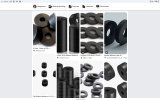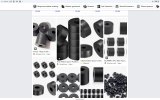Sokel
Master Contributor
- Joined
- Sep 8, 2021
- Messages
- 9,580
- Likes
- 10,277
Didn't read the whole thing here, but if these thingies changed the height of the speakers, the whole direct sound/reflection ratio has changed, specially at the two (usually out of control unless you treat) usual suspects, floor and ceiling.
That can have a big effect as ceiling is even more important than sides sometimes.
Now, combine that with some anticipation, some pride for your own work and the usual up treatment by the dealer (it should be, it's part of the price in such "upgrades" ,I know I would want it) and you're there.
You sure heard the "difference".
But unless a "difference" is targeted and planned as such and such, gets chaotic, isn't it?
That can have a big effect as ceiling is even more important than sides sometimes.
Now, combine that with some anticipation, some pride for your own work and the usual up treatment by the dealer (it should be, it's part of the price in such "upgrades" ,I know I would want it) and you're there.
You sure heard the "difference".
But unless a "difference" is targeted and planned as such and such, gets chaotic, isn't it?



